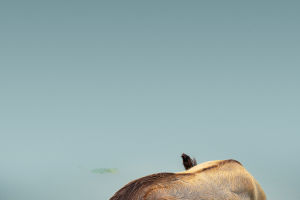Oceans cover more than 70% of the earth. It is the source of our life, and the life of human beings, as well as all other creatures on earth, depends on the ocean. Thanks to the density of seawater, the depth and temperature of the ocean, etc., countless magical creatures that are different from other animals on land have been bred in the ocean. This article will tell you about the most powerful animals in the ocean.
1. Blue Whale
The blue whale, possibly the largest animal in the history of the earth, can be said to be the most well-deserved strongest in the ocean in a one-on-one situation! They are 33 meters long and weigh more than 180 tons. But in recent years, there have been records of killer whale groups besieging and killing blue whale sub-adults. Despite their large size, blue whales are docile and filter feeders, mainly feeding on krill.
Human hunting led to the near extinction of blue whales in the mid-twentieth century. In recent years, although relevant conventions and regulations have protected them, more and more marine pollution is threatening their lives, and the noise generated by the increasingly busy ships in the ocean is also hurting these gentle giants.
2. Sperm whales
Sperm whales are the largest toothed whales in the world, and adult sperm whales can have teeth up to 30 cm long! Of course, you have to take into account their size - at 20 meters in length and 70 tons in weight, sperm whales can weigh up to 1 ton at birth! With such a large tonnage, even killer whales can't shake them alone!
Sperm whales mainly eat squid, including king squid and king physalis squid. The head of the sperm whale is especially huge, accounting for almost one-third of the body. This huge hammer-like head and strong tail have great destructive power. In order to compete for status in the population, male sperm whales often fight.
In this case, the huge head is their main attack weapon. In addition, some scientists speculate that sperm whales emit ultrasonic waves to stun their prey.
The biggest enemy of sperm whales is humans. In some severe cases, sperm whales will fight back against humans. The attacked ships often have their walls smashed or their tails overturned. There have also been records of whaling dinghies being bitten by sperm whales.
3. Killer whales
Killer whales are the largest dolphins in the world. They are 9.5 meters long, weigh 9 tons, and swim at speeds of up to 70 kilometers per hour, making them the fastest mammals in the ocean. Killer whales are particularly smart. They have groups, have social relationships with each other, and have top fighting abilities.
They are creatures at the top of the food chain in the ocean. They are very special. Killer whales in different sea areas have different feeding habits. Some only eat seals, some only eat fish, and some eat everything. Sea lions, seals, dolphins, some sharks, and the young of larger cetaceans such as sperm whales and humpback whales are on their diet.
Although it is called a killer whale, in fact, wild killer whales do not attack humans, but in the aquarium, there are about 20 records of killer whales attacking people. Perhaps these extremely intelligent animals have mixed emotions toward the humans who keep them in captivity.
4. Great White Shark
The great white shark is an ancient animal that existed on earth as early as more than 20 million years ago and has not evolved or changed much as a whole. They are the largest predatory fish in the ocean. The body length can reach 6 meters, the weight can exceed 2 tons, and it has dense and sharp teeth.
The bite force can reach 300 kg and the speed exceeds 50 km/h. It is a veritable heavy attack "torpedo". Great white sharks have a fierce temperament and cannot be kept in captivity. There has not been a successful case of captivity in the world.
They are found in almost all sea areas, and their staple food is various fish and mammals in the ocean. But they also have weaknesses. Great white sharks cannot stop swimming.
They need to swim to make the seawater pass through their gills to breathe. Once they stop, especially when they turn upside down, they will enter a state of "suspended death". Over time, they are easy to die.
5. King Squid, King Physalis Squid
The king squid and the king physalis squid are called together by scholars - the largest invertebrate in the world, how big, is it? One can only guess based on the fighting marks on their natural enemies, sperm whales, and the stumps in their stomachs. Only their sub-adults have been found so far.
It is speculated that the adult giant squid can be up to 17 meters long, and the giant physalis squid may be up to 18 meters long, and the weight of both maybe 700-1000 kilograms.
The difference between the two is that the tentacles of the giant squid are longer than the giant squid; the tentacles of the giant squid have hooks and the tentacles of the giant squid have suction cups. They are the prototypes of some mythical sea monsters.


